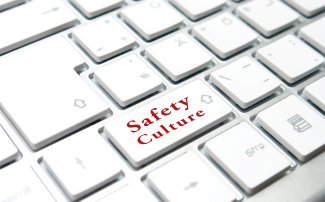Culture and Participation

Price
Add to Cart
Process Safety Culture
Many of the current approaches to risk management are now quite mature so increasing attention is being paid to the topics of culture and employee participation. For example, the Baker Commission Report to do with the incident that occurred in 2005 at Texas City states that there is a need for a "common, unifying process safety culture".
This ebook provides guidance to understanding and developing an effective process safety culture.
OSHA and EPA Updates
In the year 2022, both OSHA and the EPA introduced proposed updates to their process safety and risk management program standards.
Topics that they discuss in these updates include stop work authority, Involvement in audits, hazards analyses and incident investigations, and anonymous reporting.
Table of Contents
Introduction
Regulations and Standards
BSEE Standard for Culture
HSE and Culture
National Energy Board
Survey
Warning Flags over Your Organization
Flag One — Unrealistic Stretch Goals
Production Creep
Production Records
Initiative Overload
Flag Two — Excessive Cost Reduction
Reduction of “Non-Essentials”
Reductions in Work Force
The “Big Crew Change”
Flattened Organizations
Aging Infrastructure
Out-Sourcing
Not Enough Time for Detailed Work
Project Cutbacks
Organizational Spread
Flag Three — Belief That “It Cannot Happen Here”
Lack of Direct Experience
Good Occupational Safety Performance
Failure to Learn from Near-Misses
Failure to Draw on Experience Elsewhere
Flag Four — Over-Confidence in Rule Compliance
Flag Five — Departmentalized Information Flow
Critical Safety Information Is Buried, Lost or Diluted
Team Player Culture
Fear of Litigation
Mergers, Acquisitions and Divestitures
Flag Six — Ineffective Audit Process
Softened News to Senior Managers
Failure to Identify Root Causes
Inadequate Follow Up
Thinking Backwards
Normalization of Deviance
Imagination
Culture Matrices
Elements of Culture
On-Going and Consistent
Actions and Words
External Evaluation
Learning from Incidents
Attention to Basics / Housekeeping
Mergers and Acquisitions
Generational Differences
Measurement
Key Performance Indicators
Lagging and Leading Indicators
Lagging Indicators
OSHA Recordable Rate
Process Safety
Leading Indicators
Near Misses
Unplanned Maintenance
Process Safety Incident
KPI Limitations
Activity and Quality
Quality of Reporting
Management Elements
API RP 754
Tiers
Tier 1 — Process Safety Event
Tier 2 — Process Safety Event
Tier 3 — Challenge to Safety Systems
Tier 4 — Operating Discipline and Management System Performance
Data Submission
Selection of KPIs
Surveys
Creating a Strong Culture
Mission Statement
Guiding Tenets
Detailed Program
Behavior-Based Safety
Observed Hazard Card
Five by Five Policy
Off-the-Job Safety
Pointless Activities
Employee Participation
Developing Employee Participation
Safety Committees
Involvement in PSM Elements
Difficulties with Workforce Involvement
Inefficiencies
Unwillingness to Accept Change
Labor / Management Relations
Stakeholder Outreach

